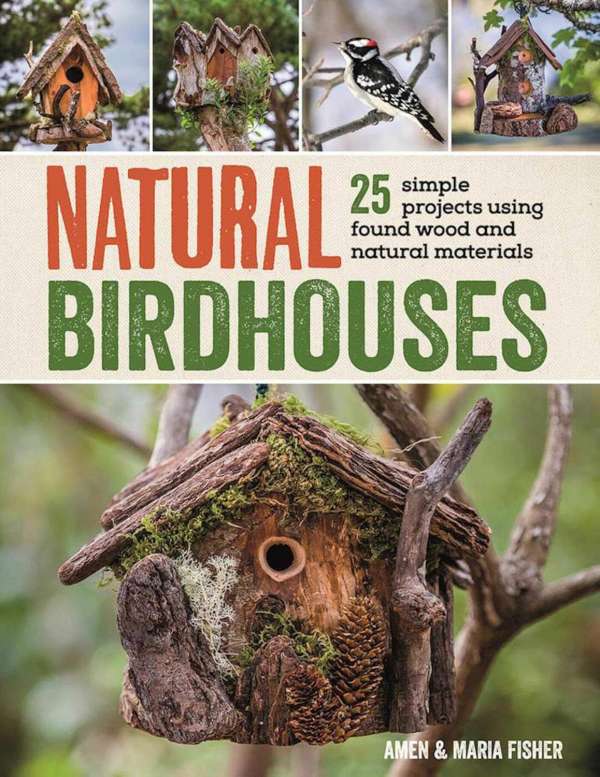
If you’re someone who enjoys DIY woodworking projects and has a soft spot for garden wildlife, Natural Birdhouses by Maria and Amen Fisher is a must-read. I picked this book up recently and have been completely inspired by the earthy, sustainable approach it offers to building homes for birds, bats, and even beneficial bugs.
What really drew me in was the focus on using found wood and natural materials—think branches, logs, reclaimed boards, and other bits of nature you can often source from your own backyard or a nearby forest. Not only does this make the projects eco-friendly, but it also gives everything a beautiful, rustic feel that blends effortlessly into any garden or backyard setting.
The book includes 25 step-by-step projects, all clearly explained and illustrated, which makes it accessible for both beginner and seasoned crafters. Even if you don’t have a fully-equipped workshop, most of these can be tackled with just a few basic tools and a bit of patience.
I started with a simple birdhouse design, using some weathered fence boards I had stashed in the shed. The instructions were easy to follow, and I was surprised how quickly it came together. Within a couple of days of putting it out in the garden, a curious little sparrow showed up—talk about instant reward! I’ve since bookmarked the bat box project and one of the insect hotel builds for next weekend.
What I really love about this book is that it’s not just about crafting; it’s about encouraging wildlife and creating a more natural, welcoming habitat right in your own yard. It’s a great way to involve kids, too—mine were fascinated by the idea of building a bug hotel and couldn’t wait to help collect materials.
If you’re looking for nature-inspired DIY garden projects that not only look good but also serve a purpose, Natural Birdhouses is full of ideas that check all the boxes. It’s creative, environmentally conscious, and a great way to spend time outdoors while giving something back to the ecosystem.
I’d definitely recommend this to anyone into sustainable gardening, backyard birdwatching, or rustic outdoor décor. Let me know if you give it a try—I’d love to hear what you build!
